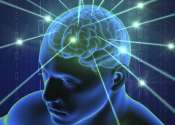Brainwaves suppress obvious ideas to help us think more creatively
The human brain needs to suppress obvious ideas in order to reach the most creative ones, according to scientists at Queen Mary University of London and Goldsmiths, University of London.
Dec 10, 2018
3
1414









